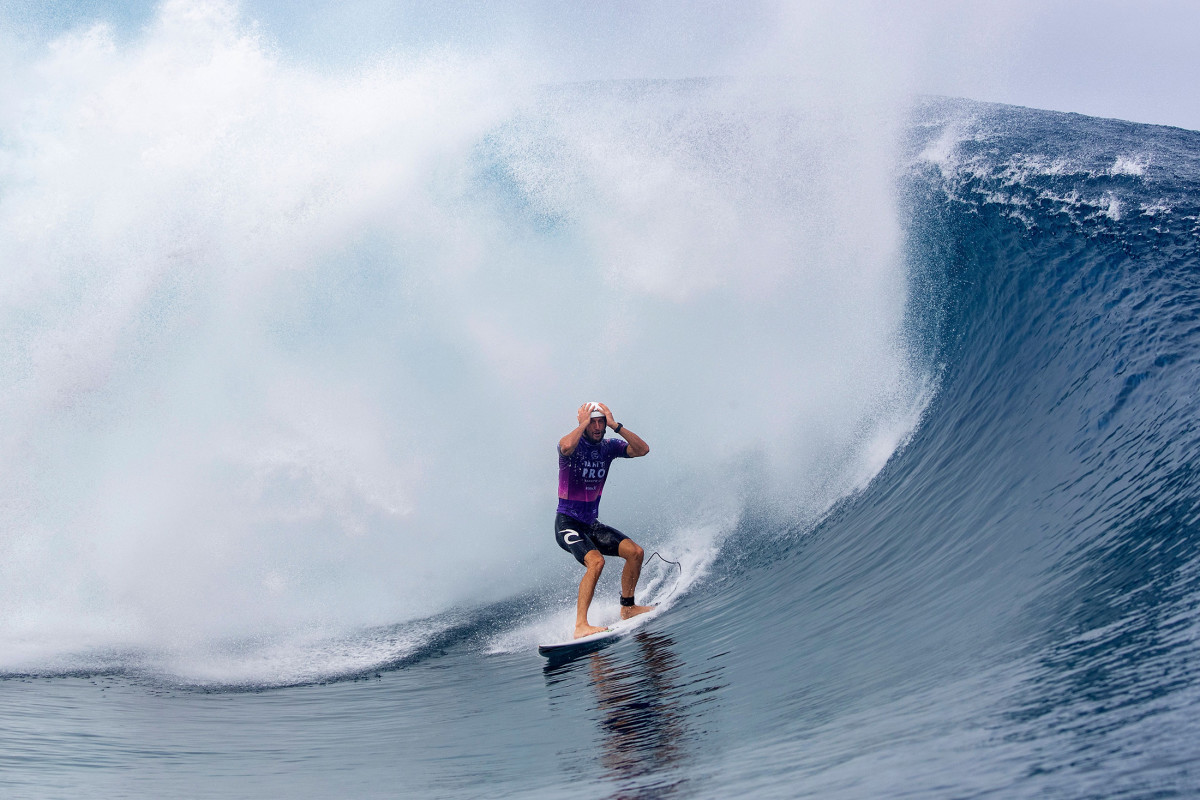
Bielmann via Getty Images
Surfing is always evolving. From surfboards to accessories, to man-made waves, to the performance art of the sport itself, this thing just doesn’t sit still. The Innovation S-Curve, as you well know, has three stages; fermentation, take-off and maturity. It could be argued that we are still very much in the take-off phase. Maturity, hopefully, is a close-out set far, far beyond the horizon.
Be it in the basics of paddling assistance, to design leaps involving fins, leashes and helmets, the best surfing technology changed the sport for the better, forever. On the flip side, you all would have examined Rogers’s Innovation Adoption Theory, whose first stages are done by innovators and the final by a group called the laggards. Sometimes these groups can just get it wrong. They either take a great idea (added board volume, traction pads) and make it worse (paddling gloves, front foot traction) or simply come up with a terrible innovation in the first place. So, for no good reason at all, we thought we’d investigate both sides of the surf technology coin. And it goes a little like this…
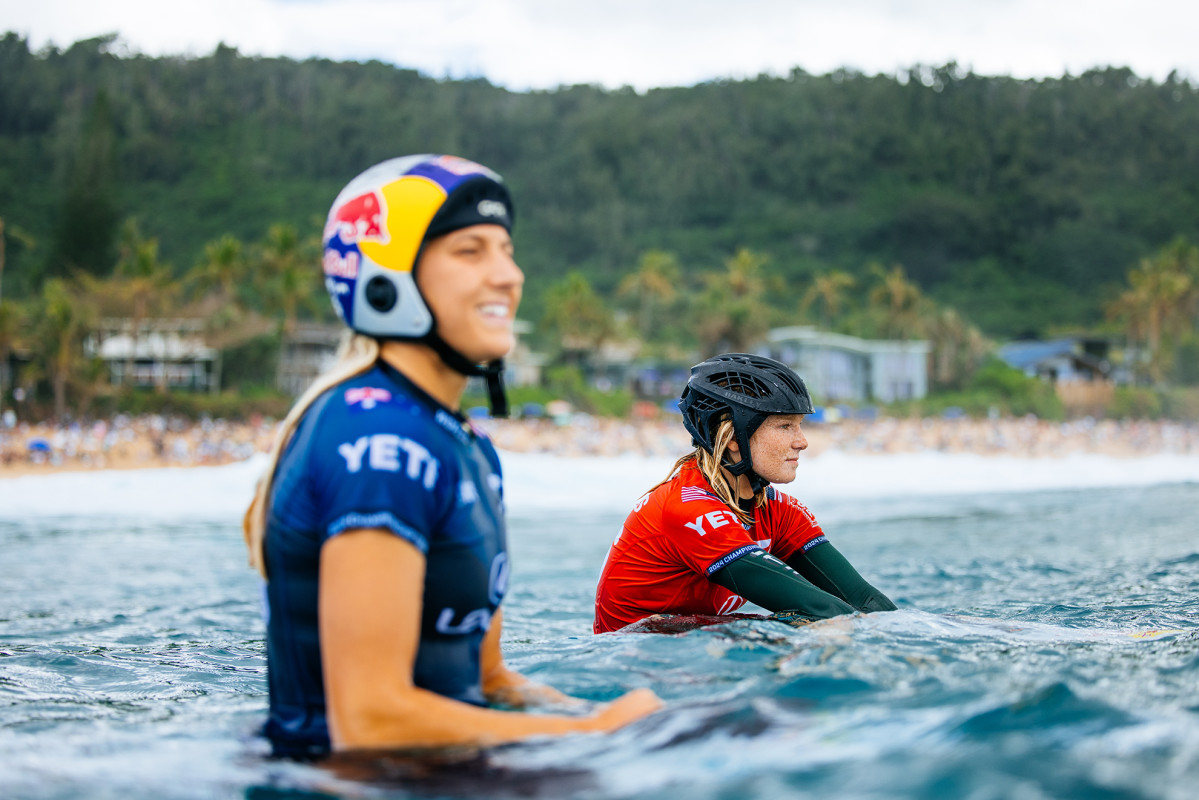
WSL/Getty
Headwear
Good: Helmets
The increasing use of helmets in surfing will, undoubtedly, minimize head trauma and save lives. That it’s taken this long to lose the stigma of wearing a bucket (Tom Carroll won Pipe wearing one way back in 1992) is madness, but at least the tables have turned. In the recent Teahupo’o event, more than half the field wore headwear. That will soon feed into the everyday line-ups, making surfing much safer.
Bad: Gath Helmet Visor
So you can’t argue with helmets. And the Gath helmets, developed by Western Australian surfer Rick Gath in the 1980s, were the best of their kind. However, in a classic case of taking a good idea one step too far, the Visor was an unnecessary adjunct. It made people look like a cross between a cyborg and a motorcycle cop and limited both vision and hearing. ’90s Pipe specialist Liam McNamara may disagree (he perfected the flip visor mid-Pipe bottom turn) but for everyone else, it was a flashing sign that glowed “Kook”.
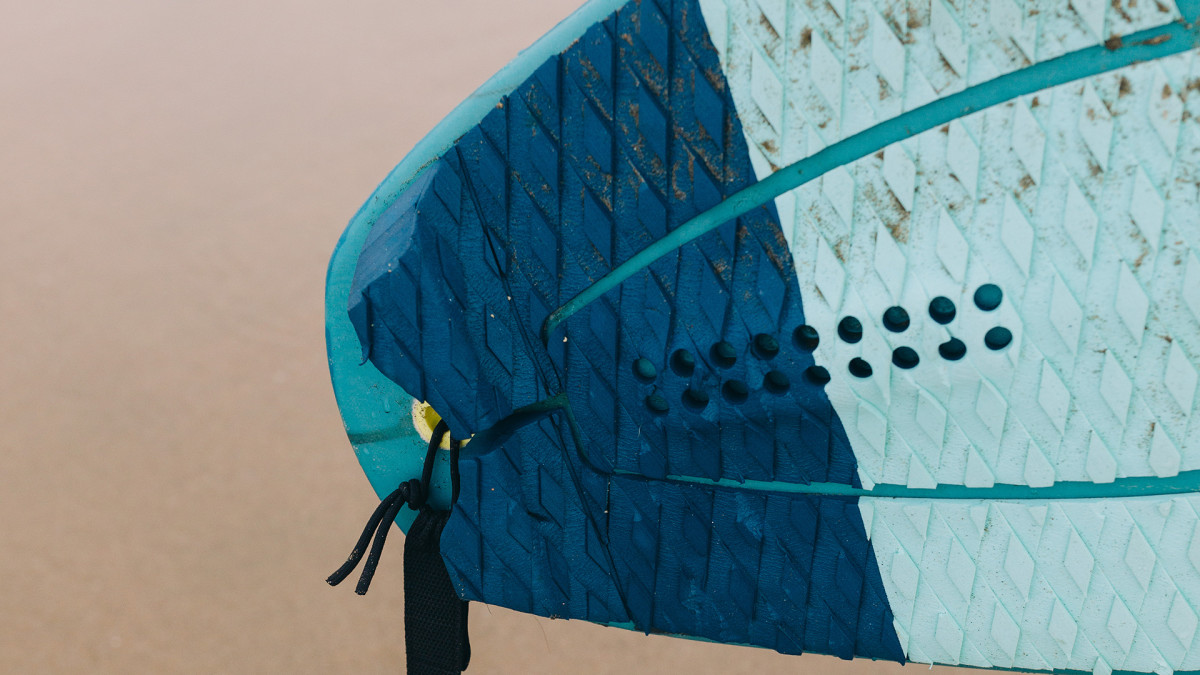
Voelker/Getty
Traction
The Good: Back foot traction
Deck grip, or traction, has been one of the great accessory technology leaps of our surfing lives. Its creation meant there was no need to reapply wax and provided consistent grip, padding, and protection for the all-important back foot. In essence, deck grip was, and is, practical and performance-enhancing. What’s not to love? Well, read below.
The Bad: Front Foot Traction
In the 1980s, there was no reason to think that piece of surfing genius couldn’t be applied to the whole board. In doing so though, it tipped from genius to sheer stupidity. While it did provide grip for your front foot, it also was a fantastic adhesive to your stomach, acting as a cheese grater does to soft parmesan cheese. The resulting rash meant front foot deck grip largely died out in the early 1990s, just after both Barton Lynch and Damien Hardman won World Titles on it. They had the trophies and the scars, to prove it. Since then a few aerialists and renegades like Christian Fletcher, Noa Deane, Dion Agius and Mikey Wright have persisted with the idea, but most surfers were, literally, scarred by the experience and never went back.
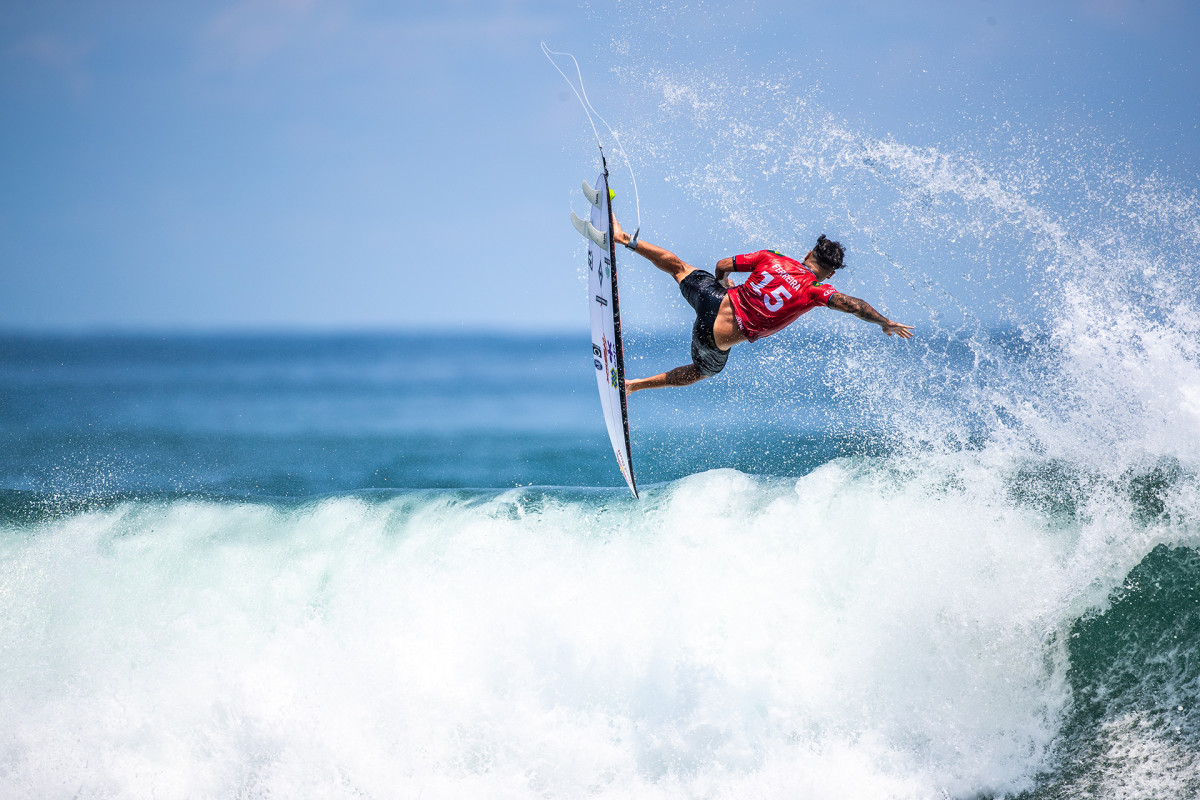
Hughes/WSL via Getty
Fins
The Good: Skegs
The very idea of a fin is probably the greatest invention in surfing. In the mid-1930s, Tom Blake is recognized as putting a keel from an old speedboat onto a traditional flat-bottomed surfboard and changing the game. Innovation then came in different numbers of fins: single, twins, and the biggest shift, Simon Anderson’s thruster around 1980. Since then, the single best invention has been removable fins. Yes, younger readers, once upon a time, a board was birthed, and died, with the same set of glassed-in fins. Traveling was a nightmare and unless your job was a ding fixer, removable fins have made surfing so much easier, better, more varied and, well, better.
The Bad: Reverse-Engineered Fins
Fins, removal or otherwise, haven’t been excluded from high-level negative tinkering. Let’s call it reverse engineering. The Australian designer Ben Lexcen utilized the revolutionary winged keel to propel a 12-meter yacht to victory over the USA in the America’s Cup. Cheyne Horan must have thought that whatever works for a 12-meter boat, will surely work for a surfboard. While maybe ahead of its time, it never took off and may have cost Horan a World Title. The Turbo Tunnel Fin was another example, which started with installment issues and died a death after it failed to “provide longer noserides and smooth powerful turns” as advertised. Reverse Rake Boomerang, the Canza, S-Wings, Swivel and Quantum are just a few other examples of when good fins go bad.
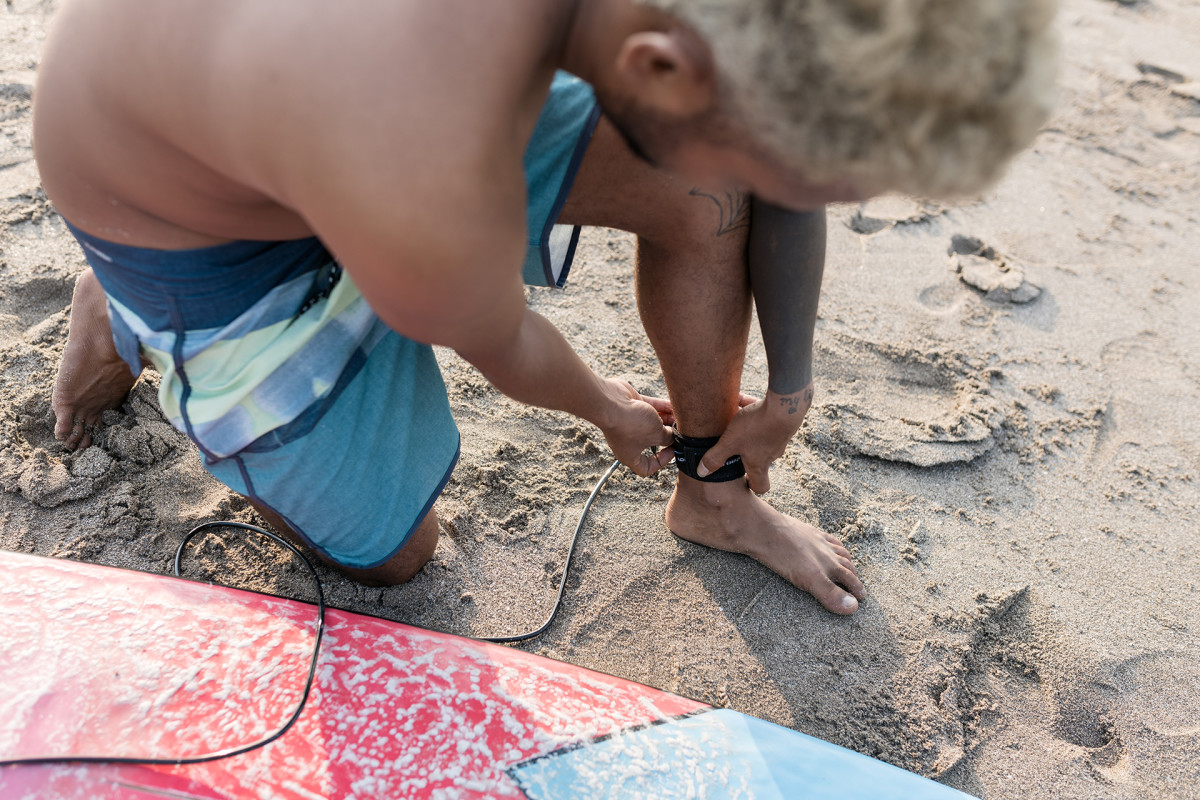
Pranoto via Getty
Leashes
The Good: Legropes
Leashes, or legropes as the Aussies call them, hit surfing properly in the 1970s. While early versions used surgical bungee cord (ironic given how many early adopters ended up in hospital) the introduction of urethane helped make them ubiquitous by the 1980s and changed surfing forever. The leash is easily one of the greatest surf inventions. Over time, the technology has improved incrementally; swivels, rail savers and, my favorite, the sewn-in string attached to the rail saver. However the genius remains basic – a rope, a leg and both being attached to your surfboard.
The Bad: Coiled Leash
If you are too young to remember these, we apologize in advance. Taking inspiration from boogie boards, possibly, coiled leashes feature a spring or slinky-like design. The theory was that they offered the same flexibility and protection, yet at only a foot or so long, were much less cumbersome. That may be true, until a wave caught the board, and the leash suddenly became 23 feet long, before springing back at warp speed (with your board connected) to its usual size. They were both largely impractical and potentially harmful; not an ideal combination indeed.
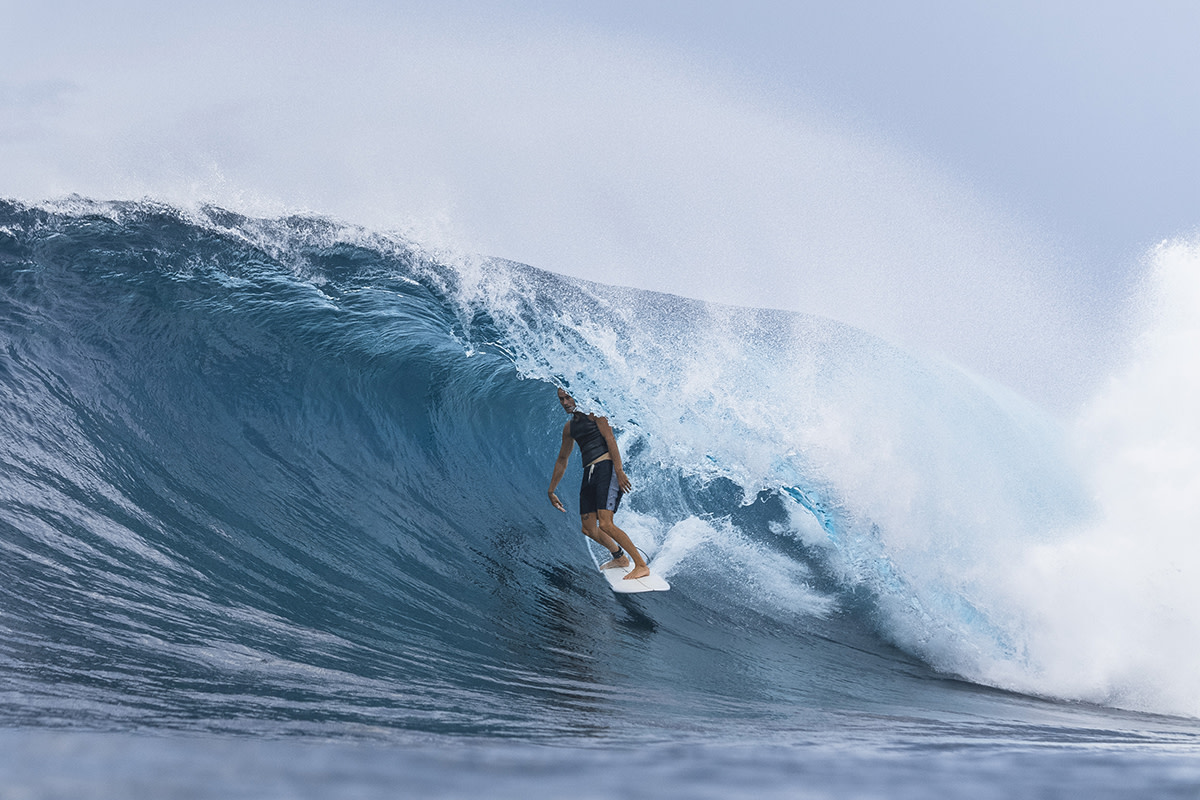
Ryan "Chachi" Craig
Paddling Assistance
The Good: Volume in Surfboards
“99 per cent of surfers in the 1990s were riding the wrong surfboards for their surfing ability,” said Rob Machado in the highly underrated surf documentary Fish. With most punters riding the same, thin, narrow, highly-rockered thrusters, never have so many surfers paddled so slow. The reintroduction of retro fishes, followed by mid-lengths, put volume under the chest, making paddling, or 99 per cent on the sport, much, much easier.
The Bad: Paddling Gloves
Paddling gloves could have revolutionized one of the dullest and most important parts of surfing – paddling. The theory was that the gloves increased surface area, and so pushed more water, which manufacturers claimed to add up to 25 percent paddling power. That was never proven, and given that it made you feel like you were paddling through quicksand for most surfers, it’s no surprise. Despite high-profile exponents like Brad Gerlach and Glen “Mr X” Winton, they haven’t graced a surfing line-up since the mid-90s.

